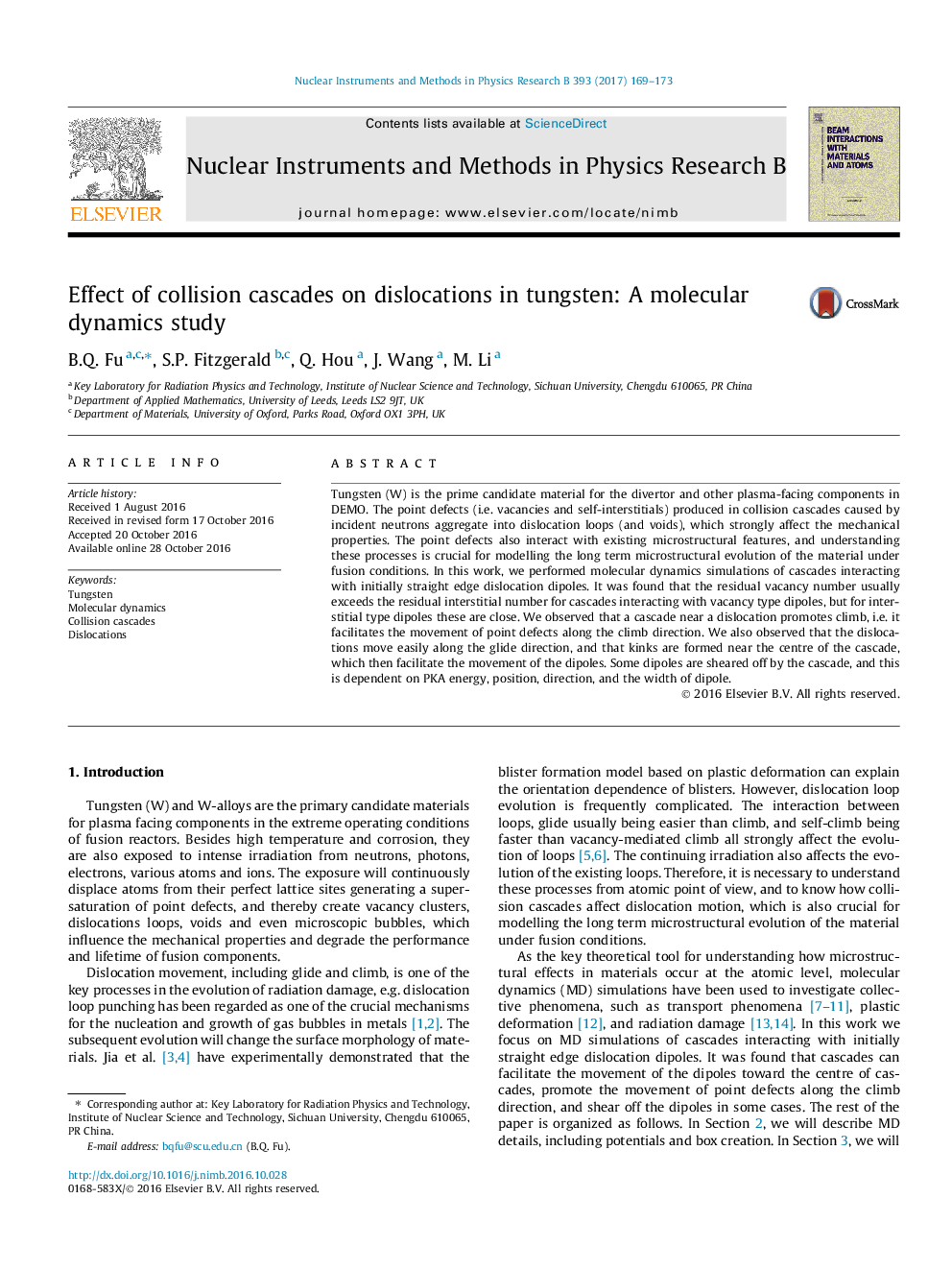| Article ID | Journal | Published Year | Pages | File Type |
|---|---|---|---|---|
| 5467687 | Nuclear Instruments and Methods in Physics Research Section B: Beam Interactions with Materials and Atoms | 2017 | 5 Pages |
â¢A cascde near a dislocation promotes climb motion.â¢Kinks induced by cascade facilitate the dipoles motion toward the cascade.â¢Shearing of dipole is dependent on PKA energy, position, direction, and dipole width.
Tungsten (W) is the prime candidate material for the divertor and other plasma-facing components in DEMO. The point defects (i.e. vacancies and self-interstitials) produced in collision cascades caused by incident neutrons aggregate into dislocation loops (and voids), which strongly affect the mechanical properties. The point defects also interact with existing microstructural features, and understanding these processes is crucial for modelling the long term microstructural evolution of the material under fusion conditions. In this work, we performed molecular dynamics simulations of cascades interacting with initially straight edge dislocation dipoles. It was found that the residual vacancy number usually exceeds the residual interstitial number for cascades interacting with vacancy type dipoles, but for interstitial type dipoles these are close. We observed that a cascade near a dislocation promotes climb, i.e. it facilitates the movement of point defects along the climb direction. We also observed that the dislocations move easily along the glide direction, and that kinks are formed near the centre of the cascade, which then facilitate the movement of the dipoles. Some dipoles are sheared off by the cascade, and this is dependent on PKA energy, position, direction, and the width of dipole.
